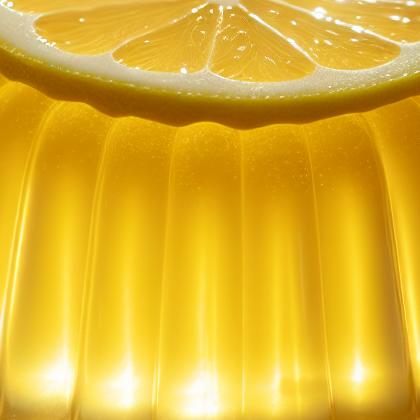Lemon Gelatin

Gelatin or gelatine (from Latin: gelatus meaning "stiff", "frozen") is a translucent, colorless, brittle (when dry), flavorless solid substance, derived from collagen obtained from various animal by-products. It is commonly used as a gelling agent in food, pharmaceuticals, photography, and cosmetic manufacturing. Substances containing gelatin or functioning in a similar way are called gelatinous. Gelatin is an irreversibly hydrolysed form of collagen, and is classified as a foodstuff. It is found in most gummy candies as well as other products such as marshmallows, gelatin dessert, and some ice cream, dip and yogurt. Household gelatin comes in the form of sheets, granules, or powder. Instant types can be added to the food as they are; others need to be soaked in water beforehand. Gelatin has E number E441.
Lemon gelatin Pairs With:
Lemon gelatin Properties:
| Food Property | Type | Description |
|---|---|---|
| Flavor Profile | Sour | Lemon gelatin has a pronounced sour taste due to the addition of lemon juice. |
| Texture | Firmness | Lemon gelatin has a firm texture when set. |
| Moisture | Lemon gelatin has a moist texture, similar to gelatin desserts. | |
| Nutritional Value | Macronutrients | Lemon gelatin typically contains carbohydrates from sugar and gelatin. |
| Micronutrients | Lemon gelatin may contain some vitamin C from the lemon juice. | |
| Color | Natural Pigments | Lemon gelatin may have a yellow color from the natural pigments in lemon juice. |
| Aroma | Volatile Compounds | Lemon gelatin has a citrusy aroma from the volatile compounds in lemon juice. |
| Chemical Composition | Acidity/Alkalinity (pH) | Lemon gelatin is acidic in nature due to the presence of lemon juice. |
| Enzymatic Activity | Lemon gelatin may contain enzymes from the lemon juice, but these are usually denatured during the gelatin-setting process. |
Food Pairing App - Version 1.2.0
